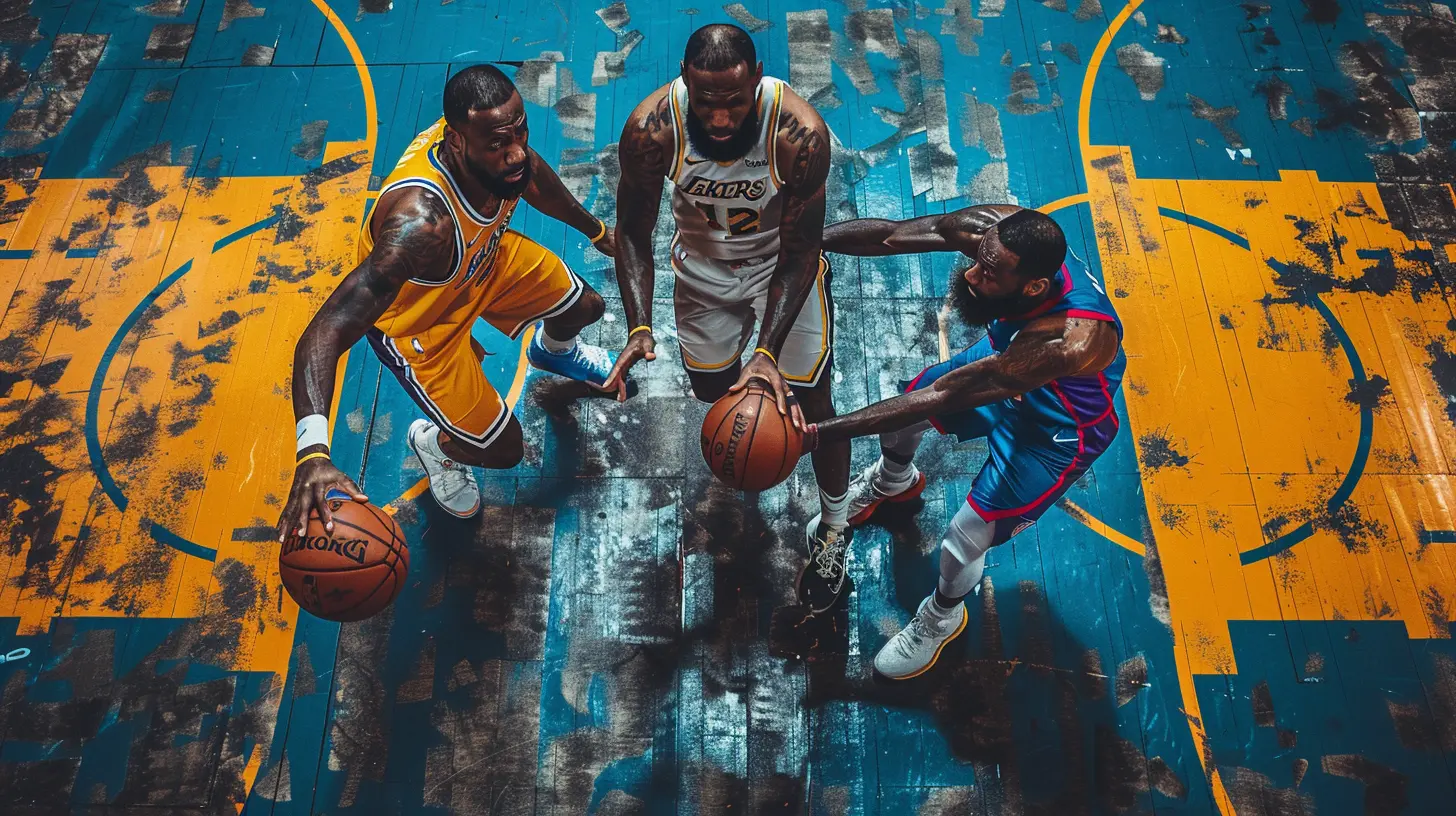From the Pitch to the Court: Comparing Leadership Styles in Different Sports Leagues
20 November 2025
When you think about sports, what's the first thing that comes to mind? The thrill of a buzzer-beater, the roar of the crowd in a packed stadium, or maybe your favorite team celebrating a hard-earned victory? Behind every unforgettable sports moment is someone quietly—or sometimes loudly—steering the ship: the leader.
Leadership in sports isn’t a one-size-fits-all kind of thing. Every sport is different, and so is the way teams are led. From the grassy expanse of the football pitch to the hardwood intensity of the basketball court, leadership styles vary wildly. But no matter the league, leadership is what separates good teams from great ones.
Whether you're a die-hard fan, an aspiring coach, or just someone who's into personal growth (and let’s be honest—we all should be), the differences in how leaders rise in different sports can be insanely inspiring. Let’s break that down.
What Makes a Great Sports Leader?
Think about the icons—Tom Brady, Serena Williams, Lionel Messi, LeBron James. All dominant in their games. But what makes them true leaders isn’t just the physical prowess or the jaw-dropping plays. It’s their ability to inspire, guide, and elevate the people around them.In sports, leadership can show up in different forms: vocal captains shouting commands, strategic masterminds controlling play, or quiet warriors leading by example. Each sport asks something different of its leaders. Let’s compare how leadership looks in a few of the world’s biggest sports leagues.
Leadership on the Football Pitch (Soccer)
The Tactical Field General
In soccer, the captain isn't just about armbands and coin tosses. The best ones act like chess masters, always thinking three moves ahead. They need eyes in the back of their head and lungs made of steel.Take someone like Virgil van Dijk. He’s calm, composed, and rarely caught out of position. His leadership doesn’t come from rants or locker-room speeches—it’s from commanding presence and consistency. Others, like Cristiano Ronaldo, lead through passion, relentless work ethic, and undeniable charisma.
On the pitch, soccer captains have to be adaptable. There are no timeouts, very few stoppages, and a need to communicate constantly with teammates on the fly—all while keeping an eye on the opponent’s next move.
Emotional Intelligence Matters
Soccer leaders must understand different personalities. You’ve got 11 players with diverse backgrounds, cultures, and languages. A great leader knows how to bring them together. They’re translators, motivators, and sometimes, peacekeepers.
Leadership in the NBA
Star Power + Locker Room Chemistry
In the NBA, leadership often revolves around star players. Unlike soccer, where players have limited touches, basketball stars are constantly involved. So, leadership has to be loud, visible, and consistent.Think LeBron James. He’s not just the best player on the floor—he orchestrates plays, calls out coverages, demands accountability, and encourages young talent. He’s a coach on the court. But it goes even deeper: the best NBA leaders create a culture that sticks, even long after they’re gone.
Leading Through Relationships
NBA teams are like small families—only 12 to 15 players on a roster. Leaders in the NBA get to know their teammates on a personal level. They build trust off the court which leads to chemistry on it. Whether it’s organizing team dinners or standing up for a teammate in the media, leadership here involves heart.
The NFL's Unmatched Intensity: Leadership Under Pressure
Quarterbacks as Field Generals
In American football, the quarterback isn’t just a player—he’s a commander. The pressure is brutal. Leading huddles, reading defenses, calling audibles, and staying calm when 300-pound defenders are flying at you? That’s a different level of leadership.Tom Brady didn't just win games—he lifted entire teams. His preparation was legendary, and he led by showing up early, staying late, and holding everyone to a higher standard.
Passionate Vocal Leaders
NFL locker rooms thrive on passion. Whether it’s Ray Lewis firing up his teammates with pre-game speeches or J.J. Watt rallying a city after a hurricane, leadership here is emotional and raw. It's about digging deeper when your body says "no more."Leadership on the Court in Tennis: Solo Act, Same Impact
Self-Leadership is Key
Tennis doesn’t have teammates on the court. You’re out there alone. No coaches during play. No one to pass to, and no one to blame.Leaders in tennis are masters of self-control. Think about Serena Williams—mentally strong, physically dominant, and emotionally resilient. She leads not just herself but the younger generation of athletes by setting an example.
Mentorship Beyond the Game
Even though tennis is a solo sport on paper, players often become leaders for their communities and fans. They mentor, start foundations, advocate for change—and yes, they inspire millions just by showing up with courage and confidence.NHL Leadership: Toughness and Grit
Captaincy With a Code
Hockey culture is unique. NHL captains like Sidney Crosby or Jonathan Toews aren’t flashy—they're no-nonsense warriors. Hockey leadership is about grinding through adversity, sacrificing for the team, and staying humble no matter how many hat tricks you rack up.Lead by Example
Fighting, injuries, and grueling schedules make hockey one of the toughest sports physically and mentally. Leaders here often say little but do a lot. They block shots, work the hardest in practice, and never back down.Respect is earned in the NHL, not given. And once it's earned, leaders hold it with pride.
Different Styles, One Goal
It doesn’t matter if you’re breaking tackles on a football field or sinking threes on a basketball court—the best leaders serve their team. They sacrifice ego for the squad. They turn "me" into "we." They become the heartbeat of the locker room and the fire in the soul of every game.Each sport demands its own version of leadership:
- Soccer: Strategic, calm, and inclusive
- Basketball: Vocal, charismatic, and adaptable
- Football: Commanding, decisive, and emotionally charged
- Tennis: Self-assured, mentally tough, and inspirational
- Hockey: Gritty, humble, and battle-tested
What Can We Learn From These Athletes?
The truth is, sports mimic life. We all lead in some way—at home, at work, in our communities. Watching how different sports foster leadership gives us playbooks for our own lives.- Be adaptable like a soccer captain.
- Build relationships like an NBA star.
- Stay calm under pressure like an NFL quarterback.
- Lead yourself like a tennis ace.
- Earn respect through action like an NHL captain.
No matter where you are in life, leadership is a skill you can develop. You don’t need a jersey or a highlight reel—you just need heart, vision, and the willingness to lift others up.
Final Whistle: Leadership Knows No Boundaries
From the pitch to the court, leadership crosses borders and breaks barriers. Each sport teaches us something different, but the lesson is universal: Great leaders aren't born—they're built. Through effort, courage, and compassion.So whether you're gearing up for your next game, your next meeting, or your next life goal—remember this:
Leadership isn't about being the loudest voice in the room. It's about helping others find theirs.
Now, tell me... How are you going to lead today?
all images in this post were generated using AI tools
Category:
Sports LeaguesAuthor:

Preston Wilkins

